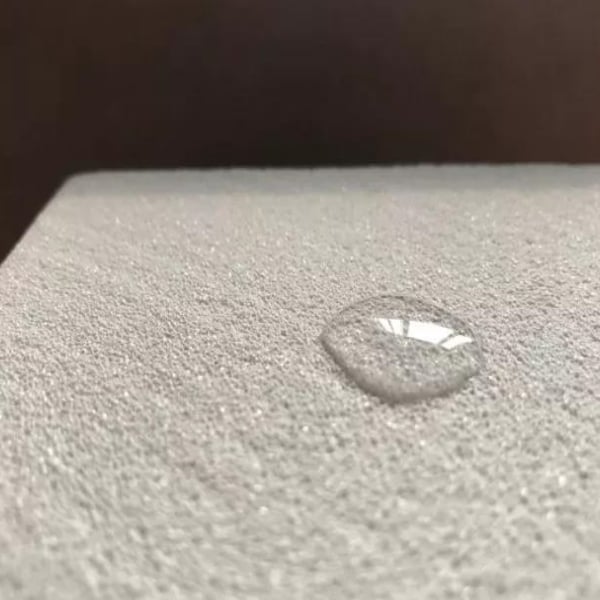Introduction to Ceramic Foam" href="https://tech-home-supplies-company-limited-en.xunluai.com/products/ceramic-foam">Ceramic Foam
Ceramic foam is a versatile and innovative material that has gained significant attention in various industries due to its unique properties and wide range of applications. This article will explore the different aspects of ceramic foam, including its composition, manufacturing process, and potential uses in various industries.
The Composition of Ceramic Foam
Ceramic foam is primarily composed of a mixture of ceramic powders and a foaming agent. The ceramic powders can be made from a variety of materials such as alumina, silicon carbide, zirconia, or silicon nitride. These powders are mixed with a foaming agent, which can be organic or inorganic, to create the desired porosity and structure of the foam.
The Manufacturing Process of Ceramic Foam
The manufacturing process of ceramic foam involves several steps. First, the ceramic powders and foaming agent are mixed together to form a slurry. This slurry is then poured into a mold and allowed to solidify. After solidification, the foam is fired at high temperatures to remove the organic components and sinter the ceramic particles together, resulting in a strong and porous structure.
The Porosity of Ceramic Foam
One of the key characteristics of ceramic foam is its high porosity. The foam structure contains a network of interconnected pores, which can range in size from a few micrometers to several millimeters. The porosity of ceramic foam can be tailored during the manufacturing process to meet specific requirements, making it suitable for a wide range of applications.
The Thermal Insulation Properties of Ceramic Foam
Ceramic foam exhibits excellent thermal insulation properties, making it an ideal material for applications where heat insulation is crucial. The porous structure of ceramic foam traps air within its pores, creating a barrier that inhibits the transfer of heat. This property makes ceramic foam highly desirable for applications in the aerospace, automotive, and energy sectors.
The Sound Absorption Characteristics of Ceramic Foam
In addition to its thermal insulation properties, ceramic foam is also known for its exceptional sound absorption capabilities. The porous structure of the foam allows it to absorb sound waves, reducing noise levels in various environments. This makes ceramic foam an attractive material for soundproofing applications in buildings, industrial facilities, and even in the automotive industry.
The Mechanical Strength of Ceramic Foam
Despite its high porosity, ceramic foam exhibits remarkable mechanical strength. The sintering process during manufacturing creates strong bonds between the ceramic particles, resulting in a durable and robust material. Ceramic foam can withstand high temperatures, harsh chemicals, and mechanical stress, making it suitable for demanding applications in the chemical, metallurgical, and filtration industries.
The Applications of Ceramic Foam in the Aerospace Industry
The aerospace industry extensively utilizes ceramic foam due to its lightweight nature, excellent thermal insulation properties, and high temperature resistance. Ceramic foam is used in engine components, such as combustion chambers and exhaust nozzles, to enhance fuel efficiency and reduce heat transfer. It is also used in heat shields, thermal barrier coatings, and insulation tiles for spacecraft.
The Applications of Ceramic Foam in the Automotive Industry
The automotive industry benefits from the use of ceramic foam in various applications. Ceramic foam filters are used to remove impurities from molten metals during the casting process, improving the quality of automotive components. The sound absorption properties of ceramic foam are utilized in engine compartments and exhaust systems to reduce noise levels. Additionally, ceramic foam is used in catalytic converters for its high surface area and thermal stability.
The Applications of Ceramic Foam in the Energy Sector
In the energy sector, ceramic foam finds applications in thermal insulation for high-temperature processes, such as in furnaces and kilns. Ceramic foam filters are used in the oil and gas industry to remove contaminants from natural gas and oil, ensuring efficient processing and reducing environmental impact. Ceramic foam is also used in solid oxide fuel cells for its high-temperature stability and ability to facilitate gas diffusion.
The Future of Ceramic Foam
Ceramic foam continues to gain attention and find new applications in various industries. Ongoing research and development efforts are focused on enhancing the properties of ceramic foam, such as increasing its porosity, improving its mechanical strength, and exploring new materials for its composition. With its unique combination of thermal insulation, sound absorption, and mechanical strength, ceramic foam holds great potential for future technological advancements.

